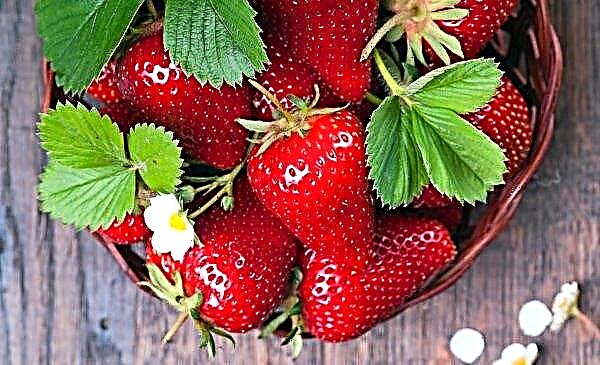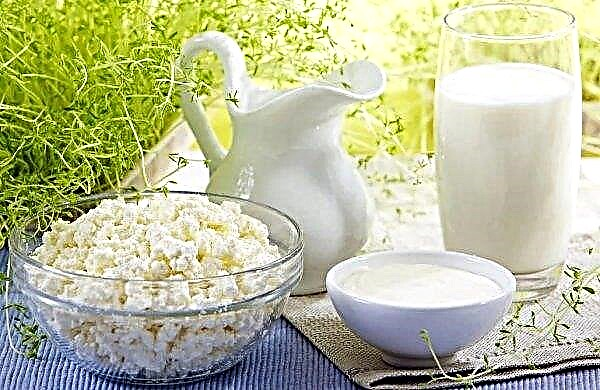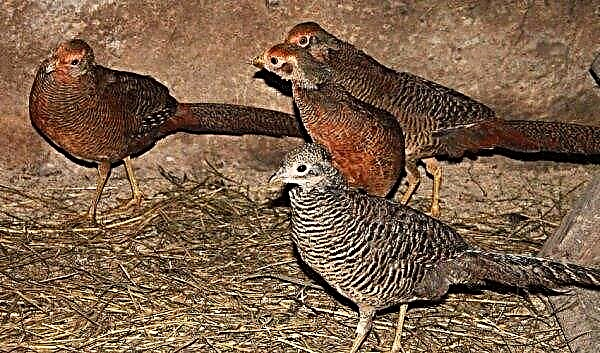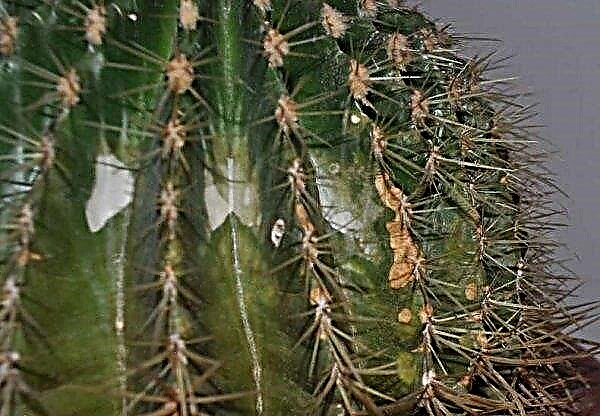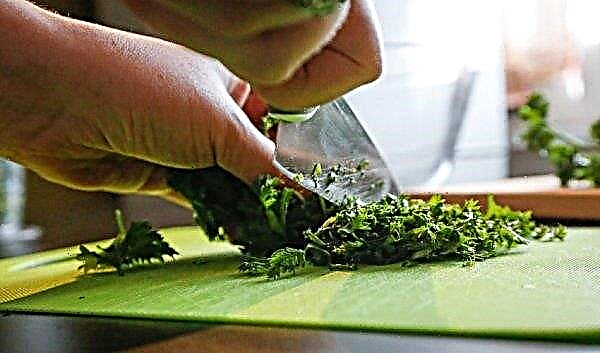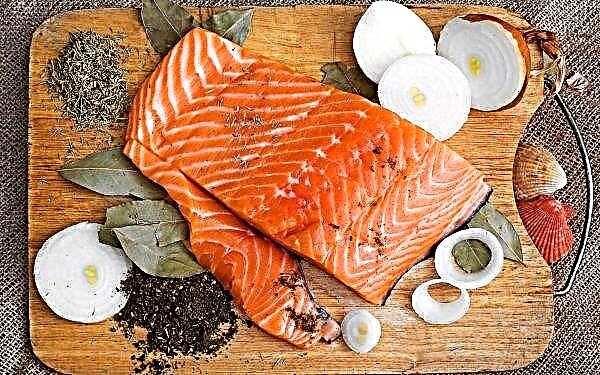There are also broiler rabbits, but nevertheless the word "broiler" is associated with the majority of chickens that can grow quickly and produce relatively cheap meat of high palatability. How to grow full-fledged broilers in a personal plot will be discussed in the article.
Features of broiler breeding
The conditions for keeping this bird are usually of two types: cellular and outdoor.
On the litter
To equip a broiler enclosure, all you need is a wall with a roof and bedding on the floor.
- In addition, the advantages of this method of keeping broiler chickens can also include:
- an opportunity for the bird to show its motor activity;
- availability of feed and water for all chickens;
- lower costs for chicken coop equipment and its maintenance than in cages.

- This type of bird growing has its drawbacks:
- the need for frequent litter replacement to prevent high humidity and the spread of infection;
- the requirement of a larger area per individual;
- a big waste of money on heating and lighting.
Did you know? The first broiler chickens were bred in the UK in the 30s of the last century. However, this was not a new breed, but just a vector found, along which breeders are still moving, bringing out new broiler crosses.
In the cells
- The benefits of growing broilers in cages include:
- convenience in servicing bird stock;
- the ability to place more birds on the same area of the earth with multi-tiered installation of cages
- lower cost of heating and lighting.

- The disadvantages of this method of growing broiler chicks are:
- limited motor activity of broilers within the cell;
- difficulty in free access to feed and water at any time due to excessive crowding;
- higher cost of constructing cells in comparison with the pen method of detention.
How to choose the right chickens when buying?
The main condition for making the right choice is the guarantee that a broiler chicken is purchased, which can only be obtained at a specialized poultry farm. In addition, when buying, you should pay attention to:
- legs of chickens, which should be straight and mobile;
- fluff, which should not, with a slight effect on it, remain on the fingers of the buyer;
- eyes in normal condition must be alive, shiny and not covered by a film;
- a beak of natural light yellow color and having a pyramidal shape.
Suitable age
Experts recommend purchasing broiler cross chicks at the age of 2 weeks. By this time, they are already strong enough to easily transfer the process of developing a new habitat.
Important! You can buy weekly chickens, but you should avoid acquiring young animals who are less than a week old, since possible genetic abnormalities appear only after this period.
Sex determination
Being crosses of a purely meat direction, broilers are not oriented to egg production. Therefore, of fundamental importance, whether a male or female is acquired, it would seem, is not. However, in practice, the difference is manifested in the greater weight that cocks gain compared to chickens. In addition, many beginner poultry farmers want to independently raise chickens, as they say, "from scratch". And in this regard, the ability to recognize the gender of the chicken when buying is becoming important. To do this, place the chick in the palm of your head with your head near the little finger and clasp it from behind with the index and thumb. After that, in the chicken cesspool you need to look through the eyes for a tubercle, indicating that it is a male.
To do this, place the chick in the palm of your head with your head near the little finger and clasp it from behind with the index and thumb. After that, in the chicken cesspool you need to look through the eyes for a tubercle, indicating that it is a male.
How to grow broiler chickens at home?
Questions about how to grow, how to maintain, what care should be and what is required for their breeding in relation to broiler cross chicks are not so simple. The content of broiler chickens is associated with certain efforts that must be made to successfully raise a bird.
Broiler Content Requirements
There are certain requirements for organizing broiler maintenance, namely:
- the personal space of each individual is obliged to provide it with unhindered reach of the feeder and drinking bowl;
- feeders for different feed species should be separate and not located next to the drinker;
- a constant availability of fresh water is necessary in the drinker, which should not be cold or too warm with a temperature exceeding +25 degrees Celsius;
- avoid drafts or dampness;
- the presence of a coating on the floor of sawdust or straw with a height not exceeding 10 cm;
- the presence of ventilation that does not create drafts.
Did you know? According to scientists, the first hens people tamed more than three thousand years ago, not because of eggs and meat, but because of spectacles exciting the blood, which were arranged with the help of pugnacious roosters.
Arrangement of premises
The first 10 days of their life, the chickens spend in the brooder, where they create the optimal growing regime. It is customary to contain up to 18 broiler chickens per square meter of space. Since at the very beginning of life in small broilers the thermoregulation of the body is still not able to fully perform its tasks, the ambient temperature should be artificially maintained at a level not lower than 30 degrees Celsius. In this case, daylight hours again, artificially, with the help of light bulbs, should last around the clock. Maximum humidity should not exceed 70 percent. The brooder should be equipped with a feeder and a drinking bowl accessible to all chicks, and the floor covered with oilcloth should be covered with a bed of straw or sawdust.
Maximum humidity should not exceed 70 percent. The brooder should be equipped with a feeder and a drinking bowl accessible to all chicks, and the floor covered with oilcloth should be covered with a bed of straw or sawdust.
Transfer of young growth to a chicken coop
After 10 days of being in the brooder, broiler chickens reach such sizes that they are already getting crowded, more and more crowding occurs near the feeder and drinking bowl. It is time to transfer the grown chicks to the chicken coop.
As already mentioned, there are cellular and outdoor methods for growing birds indoors. When choosing a suitable option, first of all, we take into account the fact that if, when growing in a pen, up to a dozen individuals are usually placed on each square meter, taking into account the rapid growth of chickens, then the number of heads in the same area in cages increases at least twice, and more often and more, depending on the number of tiers formed by the cells. What requirements are imposed on the regime of broiler bird keeping have already been described. But it should be emphasized that before transferring the chicks to the house, he, regardless of the type of their maintenance, must be thoroughly disinfected.
What requirements are imposed on the regime of broiler bird keeping have already been described. But it should be emphasized that before transferring the chicks to the house, he, regardless of the type of their maintenance, must be thoroughly disinfected.
Broiler feeding chickens at home
The primary condition when feeding broiler birds is a balanced diet, aimed both at improving the quality of the meat, and at improving the health of the chicks.
Feeding rates
The dependence of the feeding ration of broiler chicks on their age can be seen from this table:
| Bird Age (days) | What to feed |
| 0–5 | Dry millet |
| 5–7 | Dry millet, enriched with a small amount of dry food |
| 7–10 | Compound feed when replacing every three days with drinking water whey |
| 10–14 | Enrichment of feed with greens of nettles and onions |
| 14–30 | By adding chopped grains and eggshells, cottage cheese and vegetables to the diet |
| 30–60 | Complete transfer of chickens to food mixed feed or cereal from crushed wheat |
| 60–90 | Whole Grains and Legumes |
| Age of broiler chicks (days) | Daily feed volume (g) |
| 1–5 | 15 |
| 6–10 | 20 |
| 11–20 | 45 |
| 21–30 | 65 |
| 31–40 | 85 |
| 41–50 | 100 |
| 51–60 | 115 |
Broiler Chicken Feeding Recipes
The primary condition when feeding broiler birds is a balanced diet, aimed both at improving the quality of the meat, and at improving the health of the chicks.
1 to 14 days
Broilers should be provided with 8 meals a day during the day, and 6 times a day in the second week. The main poultry feed at this stage is millet with its gradual enrichment with dry compound feed. Also, growing nestlings must be fed with crushed eggs and dairy products.
Rather expensive feed is quite fully replaced by a mixture that consists of:Important! Experts, contrary to popular belief, are strongly advised not to give boiled eggs and wet food to daily chickens.
- crushed corn kernels, comprising 50% of the total weight of the product;
- crushed wheat grains, occupying 15%;
- meal, which is also 15%;
- milk products represented, for example, yogurt and occupying 12%;
- barley, making up the remaining 8%.
 In addition, the feed menu should be replenished with three-day and older broiler chicks:
In addition, the feed menu should be replenished with three-day and older broiler chicks:- dry grass flour;
- chopped dandelion leaves;
- dry and chopped nettle leaves;
- chopped alfalfa;
- pea tops also in crushed form.
- dried and crushed eggshell;
- chalk powder;
- crushed shells;
- bone meal;
- fish fat.
From 14 to 30 days
At this stage of poultry rearing, the number of daily feedings decreases to 4. The grown chickens turn into almost omnivorous.  To meet the requirements of a growing organism, chicken feed should be made as diverse as possible. To this end:
To meet the requirements of a growing organism, chicken feed should be made as diverse as possible. To this end:
- 20% of millet in the diet is replaced with crushed boiled potatoes;
- the diet is enriched with fish waste, starting from 5 g and gradually bringing the portion to 15 g;
- the mash is enriched with yeast and herbs, and in the winter - with grass meal, which should occupy a tenth of the total feed;
- the nutritional value of the diet expands due to grated pumpkin and carrot supplements, which can be up to 30 g per individual;
- milk products, as well as bone meal, crushed shells, and chalk crumbs are added to the feed;
- fresh cabbage is especially useful to add to the diet during the plumage of a bird.
Why not feed chickens?
Although broiler crosses that have reached the age of two weeks become almost omnivorous, there are still a number of products that are undesirable and even dangerous to give them. In no case should you feed the chickens:
- raw potatoes containing fatal solanine for poultry;
- a decoction of boiled potatoes due to the content in it of the same solanine;
- sweet or greasy residues from the person’s table due to the fact that with regular use of their poultry it may develop obesity;
- bread or bakery products, which, swelling in the stomach, sharply inhibit the digestive system;
- stale foods containing pathogens;
- sausages, which contain a lot of substances harmful to the bird's body;
- beetroot or its tops causing chicks diarrhea;
- fine sand blocking bird goiter.
 With all the benefits of green food for the normal development of broilers, there are plants that can cause significant harm to the bird. When walking chickens, they should be protected from eating:
With all the benefits of green food for the normal development of broilers, there are plants that can cause significant harm to the bird. When walking chickens, they should be protected from eating:
- hemlock;
- bleached;
- nightshade;
- elderberries;
- juniper;
- horse chestnut;
- potato inflorescences;
- belladonna.
Possible diseases of chickens and their prevention
Being fast-growing birds, broiler chickens are very whimsical to the regime of maintenance and at a very young age are prone to viral, bacterial, parasitic and non-infectious diseases. Predominantly in the risk zone are chickens of daily age, as well as chicks up to 5 days old and in the interval between 24 and 35 days from the moment of birth.
Most often, these chicks get sick:
- Dyspepsia, which is especially susceptible to daily chickens, as well as chicks up to three weeks of age. The disease is expressed in lethargy, inactivity of young individuals and in a drop in their appetite. Most often, the disease occurs due to the lack of freshness of food or water, as well as as a result of overeating of solid food by chicks. The elimination of these causes is the prevention of this disease. And it is treated by desoldering the chickens for 3 days with a solution of 2 g of ascorbic acid and 50 g of glucose diluted in a liter of water.
- Bronchopneumonia, which most often affects two-week-old chickens as a result of hypothermia. Symptoms of the disease are manifested in coughing, fever, lack of appetite, shortness of breath. The disease is treated with antibiotics, and its prevention consists in creating the proper conditions for keeping the bird, which primarily consists in the optimal temperature and moderate humidity.
- Hypoavitaminosis, expressed as a deficiency in feed of vitamins D, groups B, A and E, which causes loss of appetite, cramps, lethargy, inactivity, lameness and even rickets. The prevention of hypoavitaminosis is to saturate the feed with vitamins. This is the treatment of the disease.
- Marek's diseasein which lameness, blindness and very often fatal outcome occur. Since an effective treatment for this disease has not yet been found, it is imperative to implement preventive measures, which consist in strict adherence to all sanitary standards.
- Coccidiosiswhich affects the digestive tract and nervous system. A sick bird becomes depleted, becomes inactive and sleepy, and very often ultimately dies. As preventive and therapeutic measures, Koktsidiovid and Baykoks are used.
- Newcastle disease, which is an extremely dangerous infectious disease from which it is impossible to cure a sick chicken today.


Broiler poultry meat is deservedly in high demand due to its high taste conditions, nutritional value and reasonable prices. However, during the cultivation of full-fledged poultry at home, a number of necessary requirements should be observed, which, although not burdensome, still require some effort.Important! The only salvation from Newcastle disease is its prevention, which consists in timely vaccination of the entire bird population.

